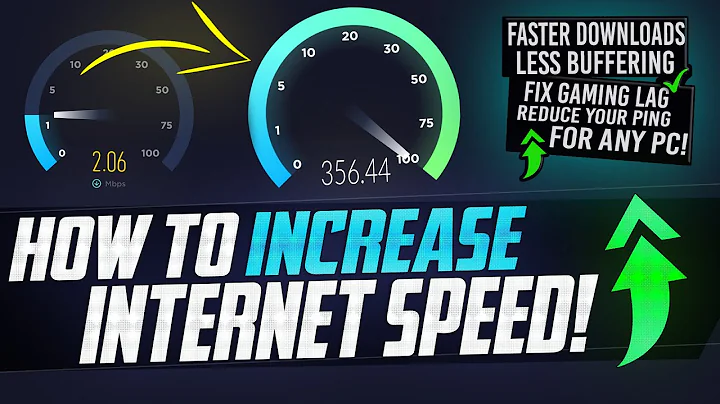Does an older device being used in the WIFI space of newer devices slow your overall connection speed?
Solution 1
First we need to clear up one big myth that's out there, and that's the idea that if an older device joins your network, that the whole network has to stop using all the faster technologies its capable of, and that everyone has to do everything the old way. That has never been true. If you had an 802.11g AP and clients, and then an 802.11b client joins, the 802.11g devices still use the faster 802.11g rates to speak to each other. It's not like everyone has to suddenly stop using G and all start using B exclusively just because a B client shows up.
That said, there are some, mostly minor, ways that the presence of an older client can cause the faster devices to not get quite as much throughput as they would have gotten without the slower device present.
One issue is that the slow client requires a lot more airtime than a faster client to transfer the same amount of data. Of course, even a state-of-the-art client, if it's too far away from the AP, may only be able to connect at slower data rates, and may use a lot of airtime to transfer a given amount of data. So this is just a common part of how 802.11 devices of all generations share the air. But with an older client, no matter what, even if it's close to the AP, it can never send data as fast as a more modern client might. So that can be a factor if the slow client has a lot of data to send or receive.
There are also a handful of minor performance tweaks that modern fast 802.11 devices can do to squeeze a few more percent efficiency out of the medium, that they can't do in the presence of older legacy 802.11 clients. So the presence of a legacy client can cause the fast client to have to stop using a few minor optimizations, and perhaps even enable a few tweaks to protect their transmissions from going undetected by (and thus getting clobbered by) legacy clients. These tweaks are mostly minor and certainly don't cause all the modern clients to get stuck at legacy rates.
Solution 2
My experience makes me agree with Pythonian. I have a hard-wired medical device joined to my WiFi network through an old D-Link 802.11b to ethernet adapter. It still works fine, but when the adapter is powered, even though the connected device is quiescent, the speed of the 2.4GHz network in the whole house suffers.
I reason from this that the WiFi connections of the more up to date devices aren't slowing down per se, but the network protocol has to work in tandem with the legacy device and even though it isn't generating original traffic, it is still participating in traffic management.
Thus, I keep it powered off, when not in use.
Related videos on Youtube
Aroueterra
Updated on September 18, 2022Comments
-
 Aroueterra over 1 year
Aroueterra over 1 yearI inquired about certain things in regards to wifi connections with an expert on it in a reddit thread once, this was what he explained:
a 2010 iPhone will NEVER be able to get 200 Mbps download. That being said, if you had a first gen iPhone and three brand new MacBook pros, there is a high chance the internet may appear slow on those three laptops. TCP/IP is the communication portion of the internet. As packets get sent from one host computer to another, they get reassembled to ensure information is correct. If these packets are not assembled in the correct order you will have issues. So, if it receives too many incorrect packets, it will slow down the transmission to allow the packets to arrive properly. This can cause congestion. The first gen iPhone would be limited by its technology and so the modem/router would accommodate for its lack of ability. One way this can be done is by slowing down everything else. It may sound strange, but I have seen this be the cause of many issues. Once the older device is eliminated from the network, speeds tend to go up. It's the same logic when you think about 802.11G vs 802.11AC. I can give you 1 gig up and down in speed, but if you have an 802.11G router, your wireless will never go above 54 Mbps.
I'm quite uninitiated when it comes to networking terminologies, but what he explains seems to make sense to me. Before I bring it up in the future as a matter of fact, I was wondering if I could check the validity of his statements. (I'm leaning on it being the truth)
Edit: Ooookay, so, I don't who's correct here after reading the given answers, I'll leave the topic unmarked for answers.
-
user1686 almost 7 years"It's the same logic" doesn't really follow, though. Limits caused by an old client (which is "on the side") work differently from limits caused by an old access point (which is directly on the path).
-
Seth almost 7 yearsCould you link the original source of that statement? Could you maybe give a bigger scope for the question? It does read like it's not actually about Apple products but rather device specific wireless standards. The AP standard is always fixed and nobody can be faster than him but always slower. Usually (assuming a single network) the slowest standard (A/B/G/N/AC etc.) will determine the overall network speed. Slowest wireless client dictates the connection quality of all others?
-
Spiff almost 7 yearsNo, that guy you quoted is on the wrong side of the Dunning-Kruger Effect. There are so many errors and misleading bits in what he said, I don't know where to begin.
-
-
pythonian almost 7 years@Spiff - No one said that all traffic will slow down to 11b rates. Please read my full post before you cast a negative vote! You need to study the 802.11 protocol a bit more.
-
ganesh almost 7 years
It join the freeway at 40kmphshould be followed by abut most of the time it is not there and does not influence anything at all. At which point the analogy breaks down. (do not get me wrong, I like analogies. They can explain a lot of things in simple terms. But this one does not fit at all). -
pythonian almost 7 yearsHuh? What are you saying @Hennes
-
pythonian almost 7 years@Hennes - Of course it does - If folks don't understand 802.11 at a protocol level, they will not understand my analogy (period)
-
Spiff almost 7 years@pythonian I downvoted because I feel "Yes….You are always bound by your slowest device" is misleading at best, and a reinforcement of the myth at worst. Your slowest device does not "bind" the network any more than any other device on the network does. It may use more airtime for a given amount of data, but that doesn't "bind" the network any more than any other device taking the same amount of airtime.
-
pythonian almost 7 years@Spiff - I am perfectly happy with my answer. When you connect a legacy device to the wi-fi network, all devices on the network will operate at the legacy speed. For example, connecting an 802.11b device to an 802.11g AP slows down the network to 802.11b speeds. The same thing is if we connect a 802.11g device to the 802.11n AP. Please read carefully... speed<>rate
-
Matthew Sharp almost 3 yearsI'm with @Hennes, the freeway analogy is, at best, misleading. Yes a slower device will impact the network, but quite differently to how a slow car impacts a freeway. There's a decent amount of correct information in your answer, but it's quite easy to come away with the wrong impression and mental model as others have mentioned.

![How to Make Your Laptop's Wifi Signal Faster On Windows 10/8/7 [Tutorial]](https://i.ytimg.com/vi/Zxe99zn5B0U/hq720.jpg?sqp=-oaymwEcCNAFEJQDSFXyq4qpAw4IARUAAIhCGAFwAcABBg==&rs=AOn4CLAn_LdNrq74XG25X6JnPIP8Ymy0EQ)


